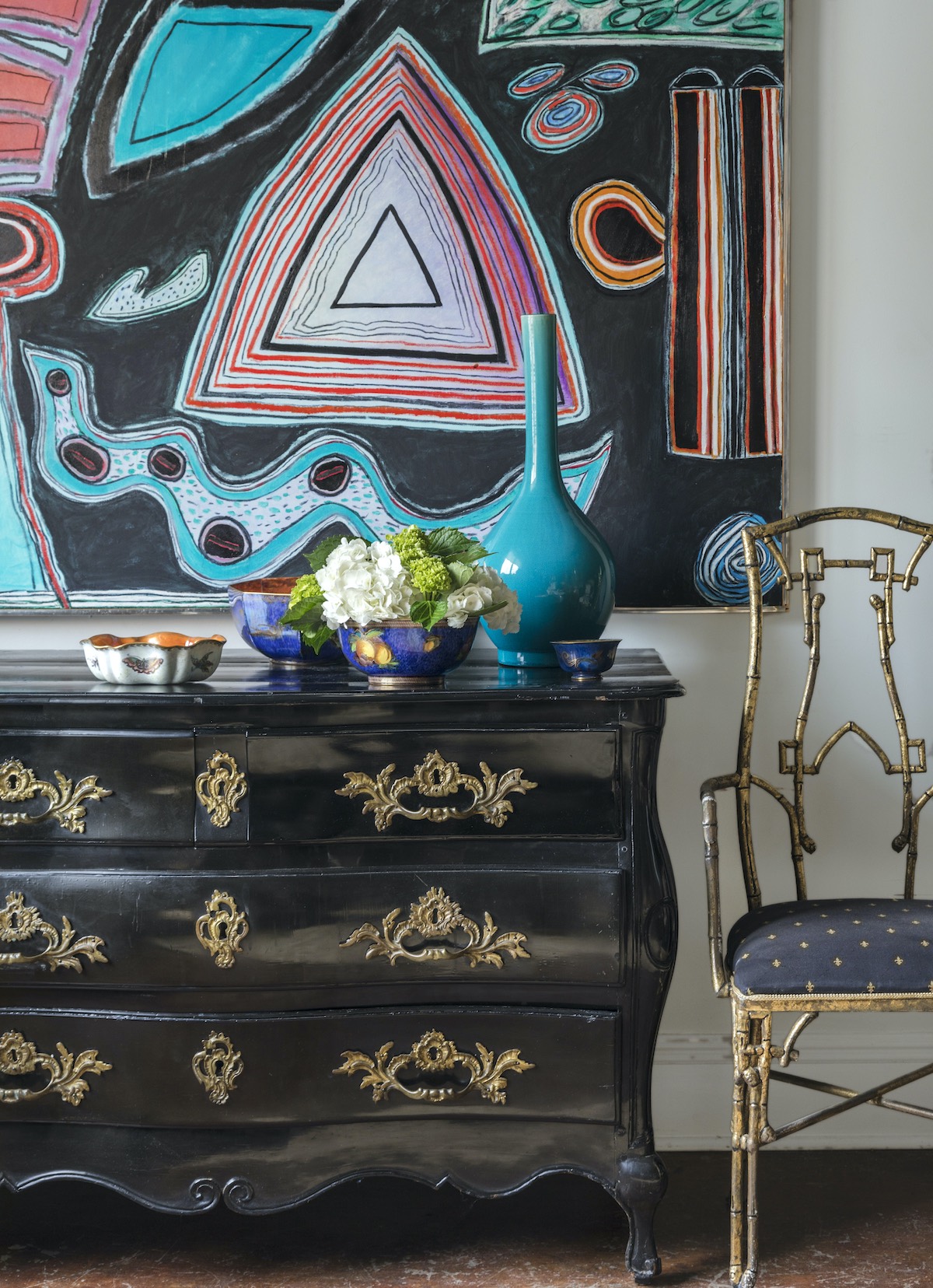
Sara Essex Bradley
An abstract painting by New Orleans artist Ida Kohlmeyer hangs above a Régence commode with a vignette of Wedgwood bowls and a Chinese porcelain vase. A gilded-metal bamboo chair adds modern whimsy. The chic combination suggests why collecting French antiques is stylish again.
Voltaire. Vuitton. Cézzane. Coq au vin. For centuries, Americans have been allured by French literature, fashion, art, and food.
The love affair began in the late 1700s when the American aristocracy began traveling abroad and returning home with containers filled with furniture, art, and decorative items. To this burgeoning new echelon, these pieces were more than just souvenirs; they were symbols of their newfound status, freedom, and style.
“The French frenzy has proven to be much more than a design trend,” says art historian Ireys Bowman, who has served as a consignment specialist focusing on Continental furniture and decorative arts for the New Orleans Auction Galleries for more than 20 years. “Today, traditional period 18th-century high-style pieces are still very much in demand, and period provincial pieces continue to command attention. Right now, there is a resurgence of interest in Art Deco and Art Moderne styles, especially among young collectors, as these pieces tend to complement contemporary interiors.”
So, as the adage states, what goes around comes around.

An arrangement of fresh flowers in a French gilded-bronze boughpot in the Renaissance style tops a neoclassical polychrome desk. A 19th-century French chinoiserie screen provides an elegant backdrop.

An 18th-century portrait of Grand Duke Petrovich hangs above a 19th-century Napoleon III table that displays pottery by French artist Paul Milet.
Images of modern rooms bathed in the soft glow from a crystal Empire chandelier or made cozy by the muted tones of a tattered Aubusson rug fill magazine pages. Across the country, interior designers are using French antiques as a means to weave history and interest into 21st-century spaces. Lauding them for their unparalleled versatility, New York–based designer Alex Papachristidis frequently incorporates neoclassical and Louis XVI pieces into his rooms. Their elegant lines complement contemporary elements. He is also drawn to the works of Maison Jansen and Jean-Michel Frank. He notes that Jansen’s chic but simple pieces evoke 18th-century French elegance while Frank’s are modern, yet classically derived. The designer also recognizes a French antique’s ability to transcend cultural boundaries in decorating.
In the living room of his Upper East Side apartment, Papachristidis pairs a Jansen-style sofa, 20th-century gilded coffee table, and 19th-century bronze gueridon with an Egyptian Revival stool and a Chinese bamboo chair and garden seat. Despite the disparate provenances, the unlikely assemblage melds seamlessly into the space for a sense of collectedness.

Antique chairs and lamps mix with a modern Jansen-style coffee table in Alex Papacristidis’s family home in the Hamptons.
For more than 25 years, Dallas-based interior designer Betty Lou Phillips has taken a similar approach to decorating with French antiques. “Harmony trumps conformity,” she says. “That is my personal design philosophy and a common sentiment among the French, whose self-assured approach to decorating captures our attention and channels our energies in pursuit of statement-making interiors.”

A polychrome secretary with chinoiserie decoration displays a small 19th-century watercolor portrait.
“Like the French, I believe that filling a room with shiny, matching sets of showroom furniture creates a look that is contrived. An innately beautiful room hosts a meaningful mismatch of pieces that serve as tangible links to the past—a threadbare area rug, a chipped porcelain vessel. These perfectly imperfect elements, each with their own résumé, come together with elegance and ease.”
By Margaret Zainey Roux | Photography by Sara Essex Bradley | Floral design by Dunn & Sonnier Antiques, Flowers & Gifts



